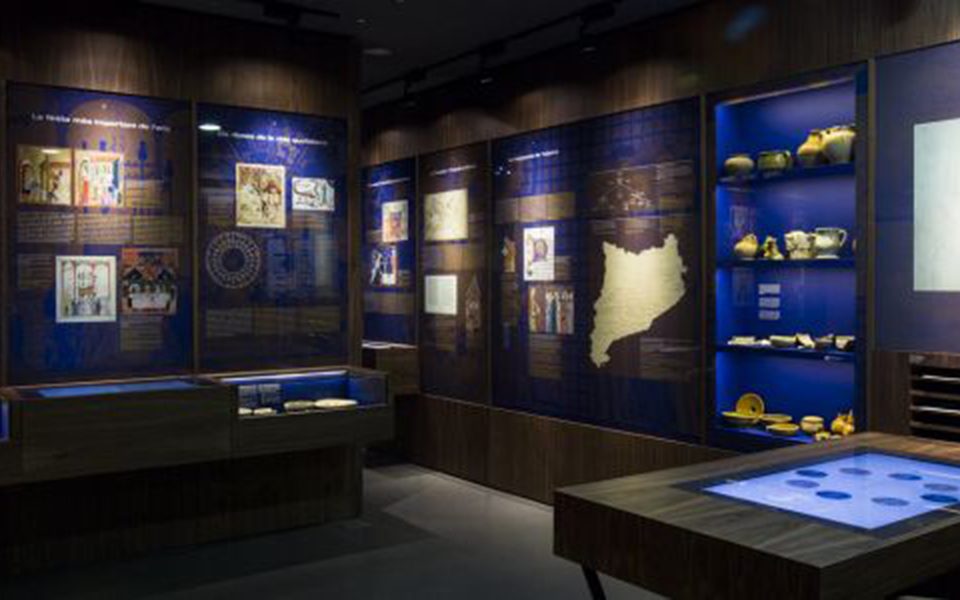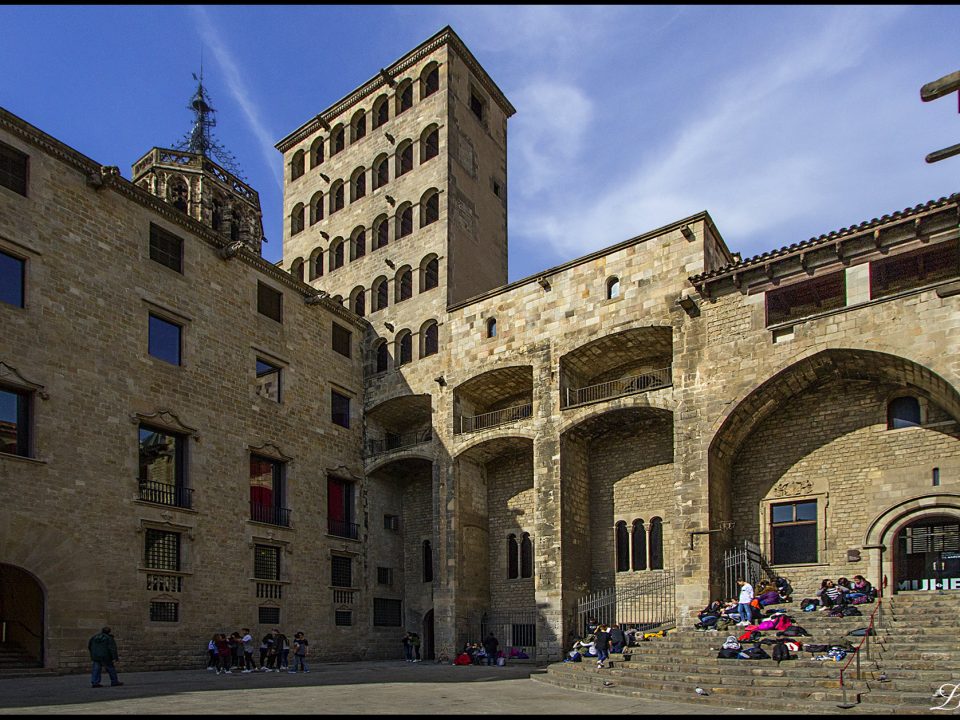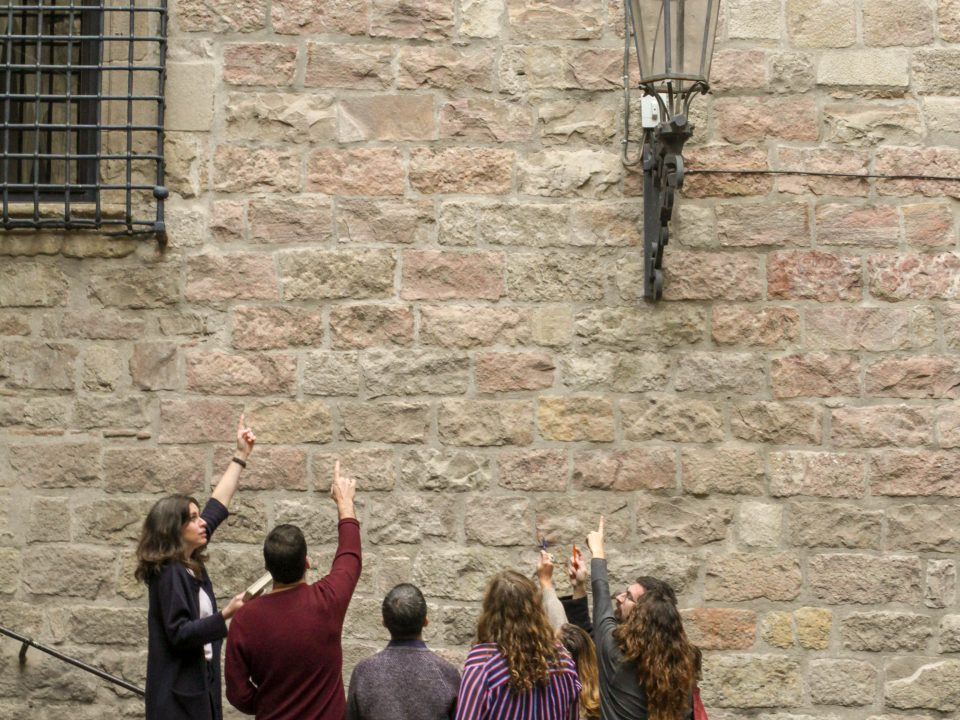A few metres on from Força street, departing from the Square of the Cathedral, on the right there is the Institut Vell Square. Here, a hole for the mezuzah, one of the distinguishing features identifying the Jewish houses, can still today be seen on one of the stones of the door of the house number 33. The mezuzah is a rolled parchment which contains a Jewish prayer. In this square there is also the access to the City History Archives, which preserve important documents related with the history of the Jewish community.
The excavations carried out at Bonastruc ça Porta Center (2012/2013) to enable a space for temporary exhibitions discovered the remains of a Jewish house built in the 13th century. At the end of the 14th century it suffered a fire, and in the 15th century, it was reused as a Jewish butcher shop, part of the complex of the synagogue, until 1492. A few years later it was demolished and turned into a courtyard where in 19th and 20th c. they built new walls and sewers.
Leaving behind the head of the cathedral, Alemanys street and Pere de Rocabertí¬ street lead to the former Caserna dels Alemanys, the site of an old military barrack today converted into a romantic garden amongst ruins and stretches of the wall. It is located on the highest point of the city and constitutes the vertex of the triangle where the former Roman Gerunda takes shape. It is in this complex where the Gironella Tower is situated, famous for serving as a refuge for Jews who were able to escape the slaughter and sacking of the of 1391.
A few metres on from Força street, departing from the Square of the Cathedral, on the right there is the Institut Vell Square. Here, a hole for the mezuzah, one of the distinguishing features identifying the Jewish houses, can still today be seen on one of the stones of the door of the house number 33. The mezuzah is a rolled parchment which contains a Jewish prayer. In this square there is also the access to the City History Archives, which preserve important documents related with the history of the Jewish community.
In 2014 the mikveh was identified in the patio of the Museum of Jewish History. The original structure has been preserved even though in later rebuildings it was transformed into a cistern. It was a closed space which could be accessed by a door, leading to a hall, a tiled changing room and the pool. Access was gained by stepping over the threshold, which led to a landing made of stone slabs, and from there people could probably go into the pool through a flight of stairs integrated in the pool, now lost. The water was supplied from a natural source by filtration, and also from the tank situated in the courtyard, which collected rainwater and filled the bath. The function of the mikveh is the spiritual purification through total immersion of the body in the water.





